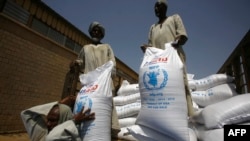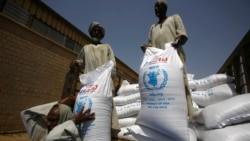Since the separation of South Sudan in July 2011, the Republic of Sudan’s economy has spiraled downward. The loss of 75 percent of its oil revenue, along with on-going conflict in parts of the country, particularly the Darfur, Blue Nile and Kordofan regions, has caused massive displacement of the population, and as a result, a disruption of food production.
This means that large segments of the population are going to bed hungry every night. Today, some 4 million Sudanese people are in desperate need of food assistance.
In a bid to head off a potential food insecurity in Sudan, the United Nations World Food Programme, or WFP, aims to deliver food and nutrition to around 2.3 million people. Another 715,000 will receive food in payment for helping to create or restore community infrastructure, or to help increase the incomes of their fellow citizen by providing support and skills.
The United States is assisting the WFP where ever possible. Through the U.S. Agency for International Development, or USAID, the United States government is contributing $86 million in food assistance to the WFP, to be used for the benefit of those in need of assistance in Sudan’s Darfur, North Kordofan and West Kordofan states.
Of the $86 million donated, 75 million will purchase about 69,000 metric tons of U.S. food. The remaining $11 million will come in the form of food vouchers, allowing voucher recipients to make their own choices from a variety of food items. This funding will also include enough cash for WFP to purchase more than 103 metric tons of locally produced specialized nutrition products to prevent and treat malnutrition in children under age 5.
This most recent contribution brings the total U.S. Government food assistance for Sudan to $170 million this year.
“The American people, this time working through WFP, remain committed to helping vulnerable Sudanese,” said U.S. Chargé d’Affaires, Ambassador Jerry Lanier. “We hope that current conflict ceases soon so there will no longer be need for food assistance in Sudan.”

















